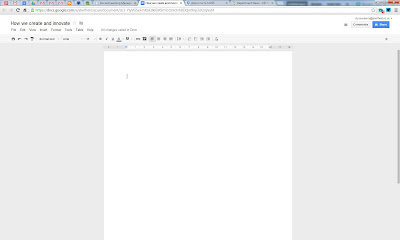Innovation & Business Skills Australia (IBSA), which is an Australian Government authorised skills council to advise on vocational education and training, identify six key areas for development in relation to innovation skills.
- Interpret - How do we understand the issue we are facing?
- Generate - How do we create ideas to respond to the issue?
- Collaborate - How do we involve others in creating responses?
- Reflect - How do we bring the outcomes of the first three stages together into something more coherent?
- Represent - How do we present this more coherent set of ideas?
- Evaluate - How do we test the idea to make sure it meets the original brief?
This seems to be an appealing description of what is involved in innovation, as it feels like how I have approached this research. I have spent time trying to understand innovation, and am now starting to generate ideas. I'm involving you, as readers of this blog in the research by encouraging you to comment, and will also be working with the rest of the team to collaborate on ideas. Then there will need to be work to fit this research into our new staff development offering, and evaluating its success.
At each of these stages, there are different development activities that could be undertaken, for instance to support generation you could develop focus group management, or give tools to support brainstorming and lateral thinking. Developing project management and networking skills could support the collaborative process. These are the kind of development activities that we could also offer, and we'll need to think about what would be of most benefit.
What I think is interesting is that there is no development suggested on how to be innovative, it is about getting people in the right creative space to be innovative. The challenge for us therefore thinking about what we can do to get people in the right creative space. I don't expect that we can get Pixar style beach huts for us to customise, or a whiteboard lined egg, but what else is there that we can do that feels right for the University of Sheffield? This reflective translation of ideas from elsewhere into practice at Sheffield will develop and emerge over the coming weeks and months, but some initial ideas I've had are:
- Internal conferences to share innovations and increase opportunities for networking and collaboration
- Walking discussion groups as a way to discuss particular topics, but outside the constraints of the office
- A series of podcasts where experts from around the University can share their experiences of being innovative
The final video I would like to share with you from my research is another TED talk, by David Kelley co-founder of design consultancy IDEO. The reason why I am sharing this is partly so I can remind myself of the importance of having the confidence to try something different. The outcomes of this whole project will be something quite different to how development is currently delivered, and there will be a need for us to be confident in the changes we are bringing about.






